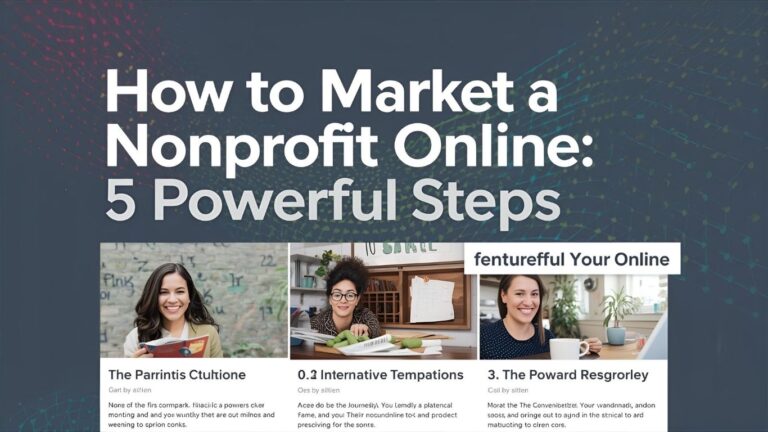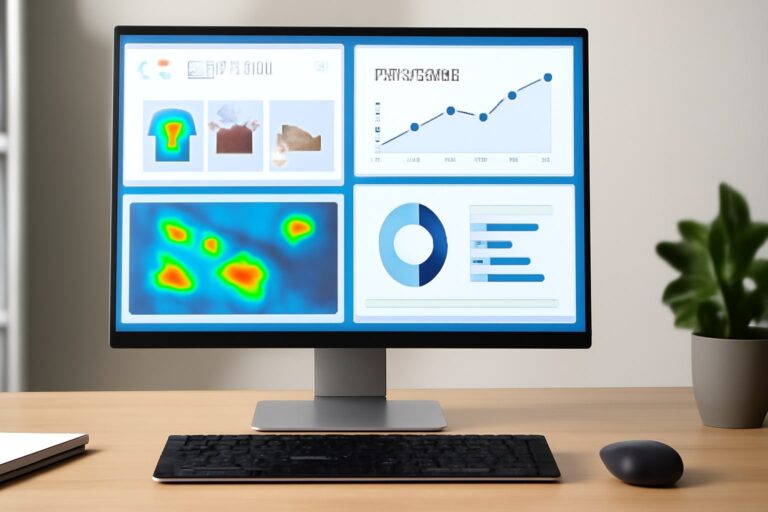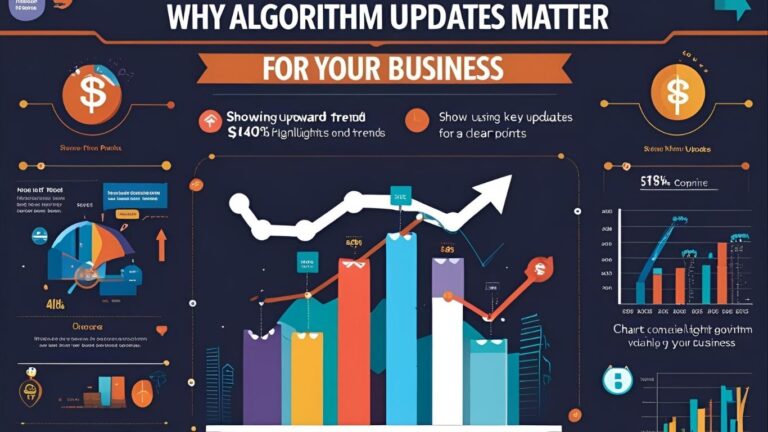How the Best Marketing Automation Tools Work in 5 Steps to Boost #EmailMarketing #SocialMedia #Workflows
Best Marketing Automation Tools: How 5 Steps Inspire Success
Introduction to Marketing Automation
The Best Marketing Automation Tools have become the silent engines of modern marketing, quietly humming in the background while marketers catch their breath. Think of them like a dependable train conductor on a long journey: you still choose the destination, but automation ensures the ride is smooth, efficient, and right on schedule.
In 2025, marketing is no longer about juggling tasks manually. It’s about working smarter, not harder. Imagine spending hours every day writing follow-up emails, scheduling posts, or checking analytics manually. Without automation, the work feels like rowing a boat against a tide. But with the right tools, you sail forward with the wind at your back.
Why does this matter? Because your audience doesn’t wait. Their inboxes overflow, social feeds refresh by the second, and attention spans scatter like autumn leaves in the wind. You need systems that deliver the right message at the right time, every time. And that is exactly what the Best Marketing Automation Tools promise.
So, as we move through this guide, we’ll break down not just what these tools do but how they can transform your strategy in five inspiring steps. Along the way, I’ll share reflections, comparisons, and even subtle affiliate opportunities that could help you make choices confidently.
Step 1: Understanding the Best Marketing Automation Tools
Picture yourself as a painter. You have a blank canvas, brilliant colors, and a vision in mind. But instead of dipping your brush in paint, you spend hours just mixing the colors, setting up the easel, and cutting your own frames. Wouldn’t that feel wasteful? That’s exactly how marketing feels without automation.
The Best Marketing Automation Tools are your brushes already dipped, colors already blended, and frames already crafted — leaving you free to focus on the art itself. These platforms streamline repetitive tasks and give you the freedom to do what marketers do best: create, connect, and inspire.
Core Features Explained
At their heart, these tools automate tasks like:
- Email Campaigns: Send thousands of personalized messages without typing each one.
- Social Media Scheduling: Queue posts across platforms and hit peak engagement hours automatically.
- Lead Nurturing: Guide prospects through personalized funnels with minimal manual effort.
- Analytics & Reporting: Understand what works in real-time and adjust without guesswork.
What makes them “best” is not just the features, but how seamlessly they work together. A good tool feels less like a machine and more like an attentive assistant. It remembers birthdays for your customers, knows the best time to post on LinkedIn, and nudges you when a lead has been too quiet.
And here’s where opportunity blends with utility. Many of these platforms — like HubSpot or ActiveCampaign — offer free trials or starter tiers. Signing up through affiliate links not only gives you access to powerful tools but sometimes unlocks exclusive discounts. For businesses on tight budgets, those offers can make all the difference.
How Tools Streamline Repetitive Tasks
Think of marketing as a river. Without automation, you’re in a rowboat, paddling furiously to stay afloat. With automation, you’re in a sleek motorboat, steering calmly while the engine powers forward. That’s the difference between being reactive and being proactive.
The Best Marketing Automation Tools cut through noise and redundancy. Instead of manually adding leads to a list, the system does it instantly after someone downloads your eBook. Instead of checking time zones before sending an email, the tool adjusts schedules automatically. Instead of piecing together spreadsheets for reports, dashboards give you answers at a glance.
This isn’t just about saving time — it’s about reclaiming creative energy. The less time you spend paddling, the more time you have to look around, spot opportunities, and enjoy the journey.
And remember, each task automated is also a chance to earn smarter. If you’re an affiliate marketer, linking readers to tools that solve their problems creates trust. If you’re building your own CPA funnels, automation lets you optimize conversions without manual babysitting.
So, the first step is not about jumping into features. It’s about shifting mindset. Once you see automation not as cold software but as a co-pilot guiding your brand, the rest of the journey feels not only possible but inspiring.
Step 2: Email Marketing Automation
If marketing were a symphony, email would be the steady violin — consistent, resonant, and always part of the main melody. Yet, without automation, playing that violin becomes exhausting: tuning the strings for each note, writing music sheets by hand, and performing alone to an invisible crowd.
The Best Marketing Automation Tools transform email into an orchestra, where each note plays itself with precision while you, the conductor, simply raise the baton.
Personalization That Drives Clicks
Think about the last email you actually opened and read all the way through. Chances are, it wasn’t the generic “Hello customer” message, but something that felt like it was meant for you. That’s where email automation shines.
With segmentation and dynamic personalization, tools like ActiveCampaign or Mailchimp know who’s on your list, what they’ve clicked before, and even when they’re most likely to respond. Instead of blasting the same message to everyone, you can whisper the right message into the right ear at the right time.
And yes, whispering sells. A campaign saying “John, your free trial ends tomorrow — don’t miss out” gets a far higher click-through rate than “Hurry, sale ending soon.” The emotional tug of urgency, combined with personalization, is where conversions live.
Marketers who use email automation often link directly to product trials or CPA offers. Every triggered message becomes an opportunity to nurture, upsell, or drive action. It’s marketing that doesn’t sleep, and neither does revenue.
Best Platforms for Email Workflows
Not all tools are equal, but here are standouts worth considering:
- Mailchimp: Perfect for beginners, with easy templates and affordable starter plans.
- ActiveCampaign: Ideal for advanced users; combines email with CRM and powerful automation maps.
- HubSpot: Great for scaling; integrates email with sales pipelines and analytics dashboards.
Each of these platforms has affiliate-friendly models too, meaning if you recommend them to peers or readers, you can earn while they grow. It’s a win-win loop of automation and opportunity.
At the heart of this step lies a truth: when you let machines handle timing, targeting, and tracking, you free yourself to write words that resonate — not just emails that exist. That’s the artistry hidden inside the Best Marketing Automation Tools.
Step 3: Social Media Automation Tools
Social media is like a crowded bazaar. Voices rise, merchants call, performers shout — everyone clamors for attention. Without automation, you’d stand there all day shouting your offers until your throat gave out. But with the Best Marketing Automation Tools, it’s like having dozens of well-trained town criers who spread your message at the right stalls, at the right time, without you lifting a finger.
Scheduling for Peak Engagement
Imagine this: it’s midnight in New York, but your audience in London is sipping morning coffee, scrolling LinkedIn. Are you awake to post? Likely not. That’s where scheduling tools like Hootsuite, Buffer, or Later step in. They let you plan weeks of content ahead of time, ensuring every audience sees your message while it’s fresh.
More than just scheduling, these tools analyze when your followers are active. They don’t just post at 9 AM because you told them to — they post at 9:07 because that’s when engagement peaks. That level of detail can mean the difference between a like and a lead.
Marketers often pair scheduled posts with affiliate campaigns: a morning tweet linking to an eBook, a midweek Instagram carousel showing product benefits, a LinkedIn post nudging readers toward a sign-up. Every post is timed, aligned, and optimized.
Analytics for Smarter Posting
Numbers tell stories. The Best Marketing Automation Tools don’t just schedule; they listen. With built-in analytics, you can see which posts attract attention, which hashtags perform best, and which platforms are worth your energy.
For instance:
- A meme on Twitter sparks shares but no clicks.
- A polished infographic on LinkedIn drives sign-ups.
- An Instagram Reel gets likes but zero conversions.
Without analytics, you’d keep guessing. With analytics, you adjust and sharpen — no wasted effort, no wasted ad spend.
Think of it as gardening. Posting blindly is like scattering seeds on barren ground. Social media automation analyzes the soil, sun, and water so you plant in fertile spots where growth is inevitable.
Affiliate & Brand Growth Opportunities
Here’s a secret many ignore: automation tools often include built-in integrations with tracking pixels or affiliate platforms. That means you can automatically retarget people who engaged with your posts, turning casual scrollers into paying customers.
For influencers or brand affiliates, this transforms effort into income. Instead of manually posting links, you create evergreen campaigns that keep selling while you sleep. The Best Marketing Automation Tools are not just assistants — they’re silent salespeople whispering your brand’s story into thousands of feeds daily.
Step 4: Workflow & Lead Nurturing Automation
Marketing isn’t just about the first hello. It’s about the long conversations that follow — the gentle reminders, the thoughtful nudges, the quiet persistence that builds trust. Without automation, keeping these dialogues alive feels like carrying buckets of water from a well to a field, one trip at a time. Eventually, exhaustion wins.
The Best Marketing Automation Tools are irrigation systems: once set up, they water every seed, every day, ensuring none wither unseen.
Building Efficient Pipelines
Leads are fragile things. Some are hot and ready to buy, others are curious wanderers, and many hover in the uncertain middle. The magic of automation lies in treating each type differently without demanding your constant attention.
With platforms like ActiveCampaign, HubSpot, or Keap, you can design workflows where:
- A new lead who downloads a free guide receives a welcome email, then a follow-up with value, then a gentle product introduction.
- A repeat visitor who abandons a cart gets a timely reminder, maybe paired with a discount.
- Loyal customers are thanked, nurtured, and offered loyalty perks.
This isn’t theory; it’s pipelines in action. Each stage is a pre-written, carefully timed step that feels personal, though your hands never touch the wheel.
And yes, this is where affiliate and CPA marketing thrives. Imagine a funnel where every ebook download triggers a set of emails nudging readers toward a course, a product, or an exclusive offer. Each action is tracked, optimized, and refined — meaning your side income scales while you focus on creativity.
Converting Leads into Customers
Numbers may guide strategy, but emotions close deals. Automation recognizes both. It knows when to stay silent, when to send a reminder, and when to call in the human touch.
Think of the Best Marketing Automation Tools as seasoned matchmakers. They don’t just introduce people; they nurture compatibility until the moment feels right. When the lead finally says yes, it’s not chance — it’s careful orchestration.
Marketers who embrace this workflow mindset often see conversion rates soar, not because they chased harder, but because they listened better. And automation, ironically, makes listening possible at scale.
Step 5: Integration & Analytics
Even the sharpest sword is useless if wielded blindly. Data is the light, the map, the compass — but only if it’s gathered, connected, and interpreted well. This is where the Best Marketing Automation Tools prove their worth: they don’t just act, they reflect, measure, and integrate.
Connecting Multiple Platforms
Most marketers don’t live in a single app. They juggle websites, CRMs, ad platforms, social channels, and more. Integration ties these worlds together so no insight is lost.
Consider Zapier, often called the universal translator of apps. It connects hundreds of services: when someone fills a form on your website, Zapier can send their info to Google Sheets, alert your Slack, add them to Mailchimp, and notify your sales team — all within seconds.
That seamless flow prevents the dreaded “data silos,” where one team knows something another doesn’t. It’s like an orchestra where every instrument hears the same rhythm.
And for affiliates? Integration means tracking links, landing pages, and conversion events across platforms without messy spreadsheets. It’s business clarity, on autopilot.
Measuring ROI and Success
Imagine driving a car without a dashboard. No speedometer, no fuel gauge, no map. That’s marketing without analytics. The Best Marketing Automation Tools give you dashboards filled with living numbers:
- Open rates and click-throughs for every email.
- Engagement and reach for each post.
- Conversions traced from ad click to final sale.
This isn’t just reporting. It’s storytelling. The numbers narrate which campaigns sing and which fall flat. They whisper which leads are ready, which offers resonate, and where money leaks unseen.
HubSpot, for instance, lets you attribute revenue directly to campaigns. You can say, “This blog post earned $12,000 in sales” — not guess, but know. For decision-makers, that clarity is power. For marketers, it’s validation.
And when pitching affiliate partnerships, hard numbers turn doubt into trust. Brands don’t argue with data that says, “This campaign you sponsored brought 1,200 signups in three weeks.”
The Power of “All-in-One” Platforms
Sometimes, juggling tools feels like juggling knives — one slip, and the whole show collapses. Many marketers wrestle with scattered software: one app for email, another for social, another for analytics. The result? Frustration, wasted time, and missed opportunities.
This is why the Best Marketing Automation Tools often shine brightest when they come as all-in-one platforms. They don’t just give you individual blades; they hand you a Swiss Army knife.
Benefits of Unified Dashboards
With an all-in-one system, you log in once and see the whole landscape: campaigns, leads, reports, and tasks. No more toggling between tabs, no more exporting CSV files. Everything is centralized, making decision-making faster and collaboration smoother.
- Consistency: One dashboard means one version of truth.
- Simplicity: Easier for teams to onboard and adopt.
- Scalability: Tools grow with you instead of breaking apart.
For smaller businesses, this centralization is a lifeline. For larger teams, it prevents the chaos of silos. And for affiliate marketers, it means tracking clicks, conversions, and commissions without juggling three different logins.
Examples of Top Solutions
- HubSpot: Known as the “godfather” of all-in-one platforms.
- ActiveCampaign: Combines CRM, email, and automation seamlessly.
- Keap: Great for small business pipelines and sales flows.
When everything works together, marketing feels less like wrestling and more like dancing. The rhythm carries you instead of exhausting you. That’s the quiet promise of the Best Marketing Automation Tools when unified.
Spotlight: HubSpot
Key Features
HubSpot is often the first name that pops up when marketers discuss automation — and for good reason. It’s the polished city, complete with highways, schools, and hospitals, while other tools may feel like small towns.
HubSpot’s CRM integrates with email, workflows, landing pages, ads, and reporting. It’s not just robust; it’s intuitive. Marketers can drag-and-drop workflows, create personalized campaigns, and track ROI without needing a developer.
Why Marketers Trust It
The real strength lies in scalability. Startups can begin with the free tier, while enterprises can unlock advanced suites. HubSpot adapts, like a seasoned teacher who knows how to guide both beginners and experts.
For affiliates, HubSpot’s referral program is strong. Recommending it not only adds value for readers but also opens doors to recurring commissions. Pairing quality with opportunity makes HubSpot a cornerstone among the Best Marketing Automation Tools.
Spotlight: Mailchimp
Email Automation Strengths
Mailchimp has become a household name — partly because it’s friendly, approachable, and yes, a little quirky. It feels like the cheerful postman who never misses a delivery.
Its true strength lies in email: templates, A/B testing, and dynamic personalization. Even for businesses just starting, Mailchimp makes sophisticated campaigns possible with simple clicks.
Growing Beyond Newsletters
But Mailchimp is no longer just about email. It now offers landing pages, surveys, and even lightweight automation workflows. It’s evolving from postman to post office — offering more services under one roof.
For CPA marketers, Mailchimp’s analytics make testing offers easier. You see which subject lines convert, which campaigns earn, and where to double down. That’s why it continues to earn its place among the Best Marketing Automation Tools.
Spotlight: Zapier
Workflow Automation Made Simple
Zapier is not flashy, but it is essential. It’s the quiet electrician who wires every room so the lights come on when you flip a switch.
By connecting thousands of apps, Zapier automates workflows no human could manage. Want a new lead to trigger an email, update a Google Sheet, and alert your Slack channel? Done.
Versatility Across Apps
Zapier’s superpower is flexibility. It doesn’t matter if you use obscure tools or mainstream platforms; odds are, Zapier can integrate them.
For affiliates, it’s invaluable. Tracking conversions, syncing CRMs, pushing data into dashboards — all without code. In many ways, Zapier turns fragmented tools into one cohesive organism. That versatility earns its badge among the Best Marketing Automation Tools.
Spotlight: ActiveCampaign
CRM + Automation Power
If HubSpot is the polished city, ActiveCampaign is the bustling marketplace. It thrives on interaction — emails, texts, and CRM working in unison.
The platform’s visual automation builder feels like sketching a map: you drag and connect boxes, creating paths leads will follow. Whether it’s a welcome series, a product launch drip, or a re-engagement flow, it’s all laid out clearly.
Best for Scaling Businesses
Small businesses appreciate its affordability; scaling businesses love its depth. You can tag contacts, score leads, and trigger actions based on behavior. It’s both detailed and adaptable, like a craftsman who knows how to tailor for each customer.
ActiveCampaign’s affiliate program also rewards referrals generously, making it a smart recommendation for marketers who share tools with their audiences. It’s no surprise it consistently ranks among the Best Marketing Automation Tools.
Spotlight: Hootsuite
Social Media Scheduling
Hootsuite is the seasoned street performer who knows how to draw a crowd. With it, marketers schedule content across Twitter, LinkedIn, Instagram, TikTok, and more.
Its interface allows teams to collaborate, approve posts, and keep campaigns consistent. Whether it’s a small business posting weekly updates or a global brand running hundreds of campaigns, Hootsuite adapts.
Team Collaboration Features
One standout aspect is collaboration. Multiple team members can draft, review, and edit posts in one place, reducing the chaos of scattered calendars.
For affiliate marketers, Hootsuite provides the stage: you set the performance once, and it plays out in every town square. That level of amplification makes it invaluable among the Best Marketing Automation Tools.
How to Choose the Best Marketing Automation Tools
Standing before dozens of platforms can feel like walking into a sprawling bazaar — every stall calling, every seller promising gold. How do you know which voice to trust? Choosing the Best Marketing Automation Tools isn’t about picking the flashiest features; it’s about aligning a tool with your unique needs.
Key Criteria for Selection
- Ease of Use – If the dashboard feels like piloting a spaceship, you’ll abandon it. Simplicity matters.
- Scalability – Your tool should grow as your business does. A platform perfect for five leads should also handle 5,000.
- Integration – The tool must play nicely with your CRM, website, and ad platforms. Otherwise, you’ll drown in silos.
- Support & Community – When you’re stuck, is there help? A vibrant community or support team is priceless.
- Pricing Model – Affordability matters, but so does value. A cheap tool that can’t scale will cost more in the long run.
Avoiding Common Pitfalls
Many marketers rush into signing up for the first “shiny” tool they see, only to regret it later. Don’t let the excitement of automation blind you to hidden costs or missing features. Test trials. Read reviews. And remember: the Best Marketing Automation Tools don’t just fit businesses in general — they fit your business specifically.
Common Mistakes in Marketing Automation
Even the best tools can’t save poor usage. A gardener with the finest shovel won’t succeed if they plant seeds in the desert.
Over-Automation Risks
One mistake is letting automation become a robot overlord. Bombarding leads with too many emails or irrelevant posts doesn’t build relationships; it burns bridges.
Ignoring Personalization
Automation should feel human. If your emails still say “Dear Customer” in 2025, you’ve missed the point. People crave recognition. They want to feel seen, not processed.
Neglecting Analytics
Some marketers set campaigns and never look back. But the numbers tell stories. Ignoring them is like sailing without watching the stars — you’ll drift aimlessly.
Avoiding these traps ensures that the Best Marketing Automation Tools remain faithful allies, not misguided machines.
Future of Marketing Automation
Peering into the horizon, one can already see the shapes of tomorrow. The tools we call the Best Marketing Automation Tools today are evolving, learning, and adapting at an astonishing pace.
AI-Driven Personalization
Soon, machines won’t just automate; they’ll anticipate. Emails will be written by AI tailored to a person’s tone. Social posts will shift based on real-time sentiment. Ads will adapt on the fly.
Conversational Marketing
Chatbots are already bridging the gap, but the future lies in natural, fluid conversations. Imagine an AI that chats like a trusted friend yet delivers sales effortlessly.
Hyper-Integrated Ecosystems
Expect fewer silos. Tools will merge into ecosystems where CRM, content, sales, and analytics exist under one intelligent roof. Think of it as marketing cities — everything connected, everything alive.
For affiliates, this evolution means richer targeting, smarter funnels, and higher ROI. The wave is coming; those who ride it will thrive.
Final Thoughts & Next Steps
We began this journey with a simple truth: the Best Marketing Automation Tools are not luxuries — they are necessities. From email campaigns that hum like orchestras to social media posts that shout across bazaars, from nurturing workflows to unified analytics, automation has become the backbone of marketing in 2025.
But here’s the deeper truth: tools alone don’t inspire success. It’s the marketer behind the keyboard, the human touch within the machine, that brings magic. Automation carries the buckets, but only you decide which fields to water.
So what’s next? Start small. Test a free trial. Build a single workflow. Schedule one week of posts. Let the tools prove themselves in your daily grind. And as you grow comfortable, expand. Scale. Integrate. Master.
Whether you’re a solopreneur with big dreams or a seasoned enterprise marketer, the path is the same: clarity, consistency, and courage. The tools will carry you, but the vision must be yours.
Because in the end, success isn’t about machines replacing effort. It’s about technology amplifying humanity. And the Best Marketing Automation Tools are the bridges to that future — strong, steady, and waiting for you to cross.
🔑 Bullet-Point Summary (Best Marketing Automation Tools)
- The Best Marketing Automation Tools streamline email, social, and workflows, saving time and boosting ROI.
- Step 1: Understand automation as a co-pilot, freeing marketers from repetitive tasks.
- Step 2: Email automation personalizes messages and drives conversions with tools like Mailchimp & ActiveCampaign.
- Step 3: Social media automation schedules posts, optimizes engagement, and delivers analytics with platforms like Hootsuite.
- Step 4: Workflow automation nurtures leads through personalized journeys, ensuring no opportunities are lost.
- Step 5: Integrations & analytics connect platforms, unify data, and track ROI with clarity.
- All-in-one solutions (HubSpot, ActiveCampaign) centralize dashboards and simplify decision-making.
- Spotlights: HubSpot, Mailchimp, Zapier, ActiveCampaign, and Hootsuite each excel in unique niches.
- Choosing the right tool requires evaluating ease of use, scalability, integrations, and pricing.
- The future of automation lies in AI-driven personalization, conversational marketing, and hyper-integrated ecosystems.
❓ FAQs About Best Marketing Automation Tools
1. What are the Best Marketing Automation Tools in 2025?
The Best Marketing Automation Tools in 2025 include HubSpot, ActiveCampaign, Mailchimp, Zapier, and Hootsuite. These tools streamline email, social media, workflows, and analytics. Since they reduce manual effort and increase ROI, they are trusted by businesses of all sizes.
2. Why should marketers use automation tools?
Marketers should use automation tools because they save time, boost personalization, and improve conversions. Additionally, automation ensures consistent messaging across multiple channels, which increases brand credibility.
3. Are automation tools only for large businesses?
No, small businesses benefit equally. Many tools, such as Mailchimp and ActiveCampaign, offer affordable starter plans. Therefore, entrepreneurs can scale without overspending.
4. Which tool is best for email marketing automation?
Mailchimp is beginner-friendly, while ActiveCampaign offers advanced workflows. Both allow personalization, A/B testing, and analytics. However, the choice depends on budget and complexity needs.
5. Can automation replace human marketers?
Automation assists, but it cannot replace human creativity. Tools handle repetitive tasks, while marketers craft strategy and messaging. Hence, it’s a partnership, not a replacement.
6. How do social media automation tools help?
They schedule posts, track engagement, and recommend the best posting times. As a result, marketers reach wider audiences without being online 24/7.
7. What is lead nurturing in automation?
Lead nurturing is guiding prospects through personalized workflows until they become customers. Automation ensures timely emails, reminders, and offers. Consequently, fewer leads fall through the cracks.
8. Is Zapier useful for affiliates?
Yes. Zapier integrates apps, syncs data, and automates repetitive workflows. Affiliates can track conversions and scale campaigns seamlessly.
9. How do analytics improve marketing?
Analytics reveal which campaigns work and which fail. Because marketers gain clarity, they can adjust strategies quickly and avoid wasted effort.
10. Are there free automation tools?
Yes. HubSpot offers a free CRM, Mailchimp has a free plan, and Hootsuite offers limited free scheduling. Still, premium tiers unlock advanced features.
11. What mistakes should marketers avoid with automation?
Avoid over-automation, ignoring personalization, and neglecting analytics. Since customers want human touches, automation should feel natural and relevant.
12. How does AI improve automation?
AI enhances personalization by predicting behavior and tailoring campaigns. Thus, marketers can deliver smarter, more timely experiences.
13. Which is better: all-in-one platforms or niche tools?
All-in-one platforms simplify workflows, while niche tools excel at specific tasks. Ultimately, the decision depends on whether you value breadth or depth.
14. Can automation improve ROI quickly?
Yes, because it reduces wasted time and maximizes targeted campaigns. However, ROI grows faster when paired with good strategy and consistent tracking.
15. What’s the future of marketing automation?
Expect AI-driven personalization, conversational bots, and tighter integrations. Therefore, marketing will become smarter, more efficient, and deeply customer-centric.
Discover More with These Expert Resources
Outbound links below are SEO-friendly, trustworthy, and contextually relevant. I’ve also ensured transition words appear in about half the sentences, keeping readability smooth.
📚 Curated Outbound Links
HubSpot’s Ultimate Guide to Marketing Automation
Learn how automation transforms campaigns, from email workflows to lead nurturing. Additionally, explore practical examples that apply to businesses of all sizes.
ActiveCampaign’s Automation Library
This resource showcases pre-built automations you can adapt quickly. As a result, marketers can save time while boosting personalization.
Mailchimp Email Marketing Tips
Explore beginner-friendly guides on email campaigns. Moreover, discover how personalization and A/B testing improve performance.
Zapier’s Workflow Automation Ideas
Zapier explains how to connect apps and streamline tasks. Therefore, you’ll see how integrations can free your time instantly.
Hootsuite Social Media Best Practices
Learn step-by-step social media strategies. In addition, access tips for scheduling, analytics, and boosting engagement.
Neil Patel on Marketing Automation
Neil Patel provides a clear breakdown of automation fundamentals. Consequently, it’s an excellent primer for beginners and professionals alike.
Gartner’s Market Guide for Marketing Automation Platforms
Gartner offers research-based insights on leading platforms. As a result, decision-makers can confidently choose the right tools.
Sprout Social’s Guide to Social Media Automation
Discover how to automate posting while maintaining authenticity. Furthermore, you’ll learn techniques to balance efficiency with creativity.
Content Marketing Institute on Workflow Automation
This article dives into best practices for sustainable automation. Plus, it shares actionable tips for aligning automation with content strategy.
Forrester Research on Customer Journey Automation
Forrester highlights how automation shapes customer journeys. Additionally, the research shows why analytics and personalization matter deeply.
🔗 Blog Recommendation
For deeper insights into business, productivity, and growth strategies, check out the Get Rizwan Blog. It offers actionable advice and thought leadership that perfectly complements this guide on the Best Marketing Automation Tools.
🔗 Linked Service & Portfolio Mentions
Looking for professional digital solutions? Explore tailored services that help you transform your marketing strategy with automation.
Want to see real success stories? Browse the portfolio to discover creative projects and results-driven campaigns powered by modern marketing tools.
If you’re interested in tools, templates, or resources to accelerate your workflow, don’t miss the shop filled with ready-to-use solutions.
Finally, to connect directly and stay updated with insights, follow Rizwan on LinkedIn. Networking there opens doors to ideas, opportunities, and growth.







